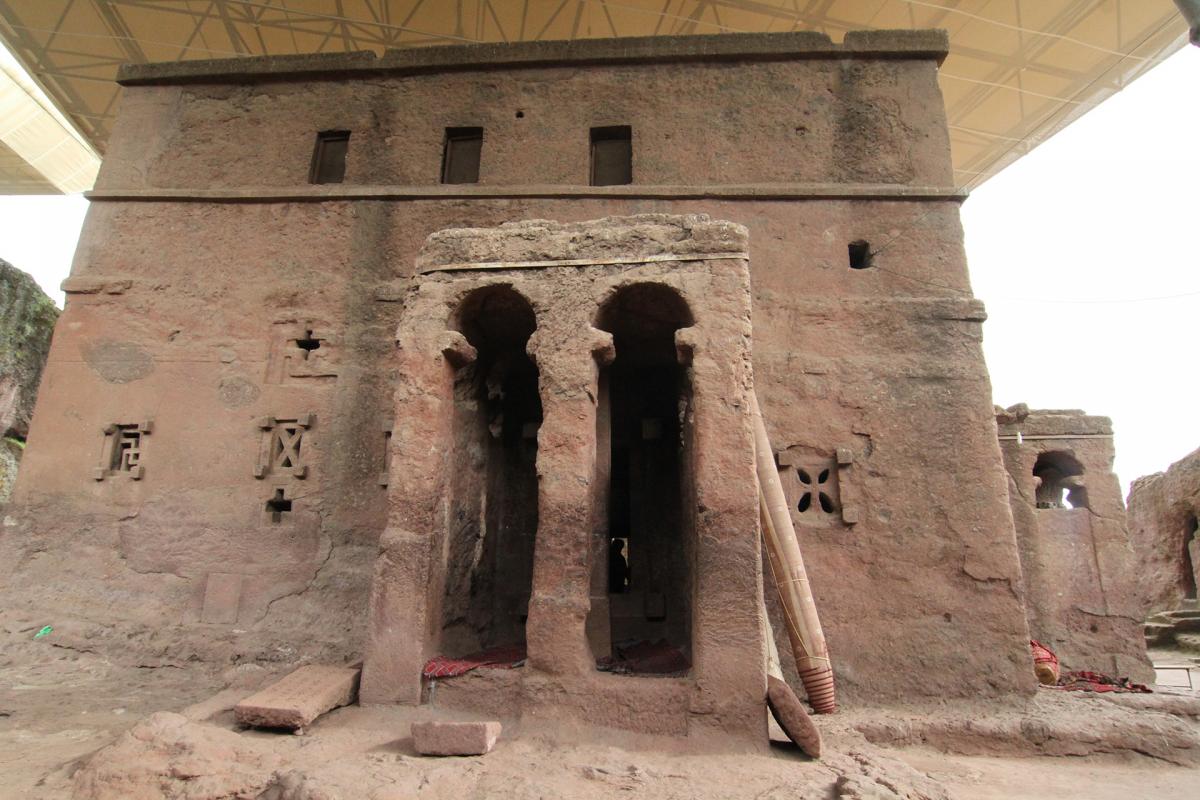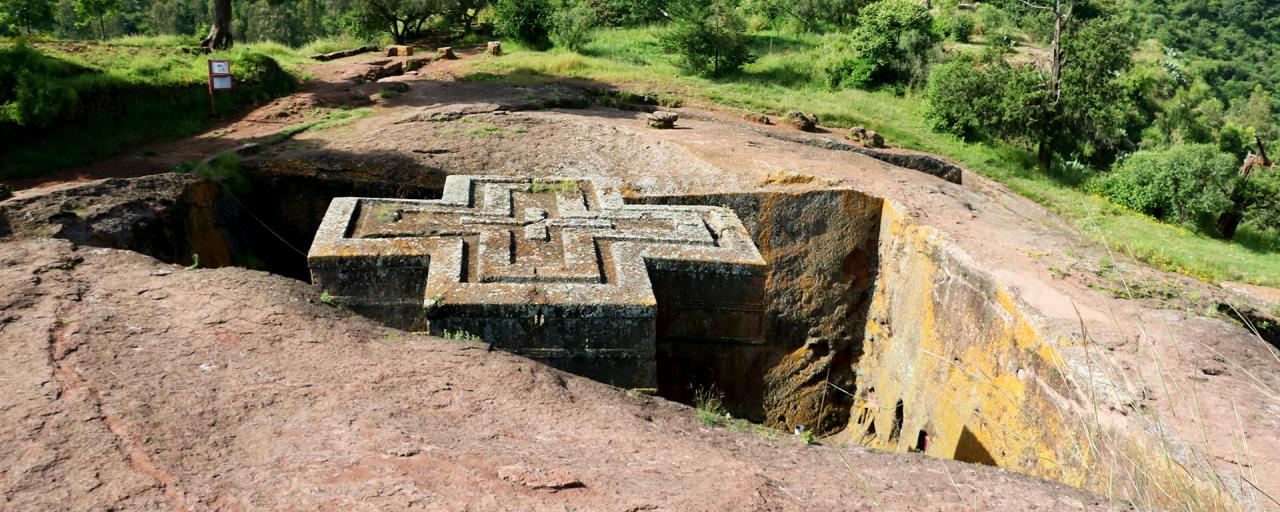Submitted by SafariADV on Sun, 2019-09-15
We are at Lalibela in Ethiopia and today was dedicated to visiting the churches carved into the rock; we had many expectations and I have to admit that they have been largely overcome.
We had seen several photographs of these churches, but they definitely do not do any justice to this architectural masterpiece.
After breakfast we left by car, we are excited because we are finally here!
Our car leaves us near the entrance and our guide tells us that a woman will also come with us who, in addition to knowing the paths inside the churches, helps us to understand where to walk; initially it seemed a useless thing and instead it is not at all: the rock is often slippery and, in some places, we proceed in total darkness, not to mention some points where there are very high steps to go down or up.
We started our visit from Bet Giyorgis or Saint George, this church stands isolated from the others and is the most scenic, since the plant is in the shape of a symmetrical cross and on the roof a cross was carved in stone; moreover, it does not have that cover against the bad weather that UNESCO has placed on top of the other churches in Lalibela since it was included in the List of World Heritage Sites.
Early in the morning there are no other visitors, only a few faithful who come here to pray.
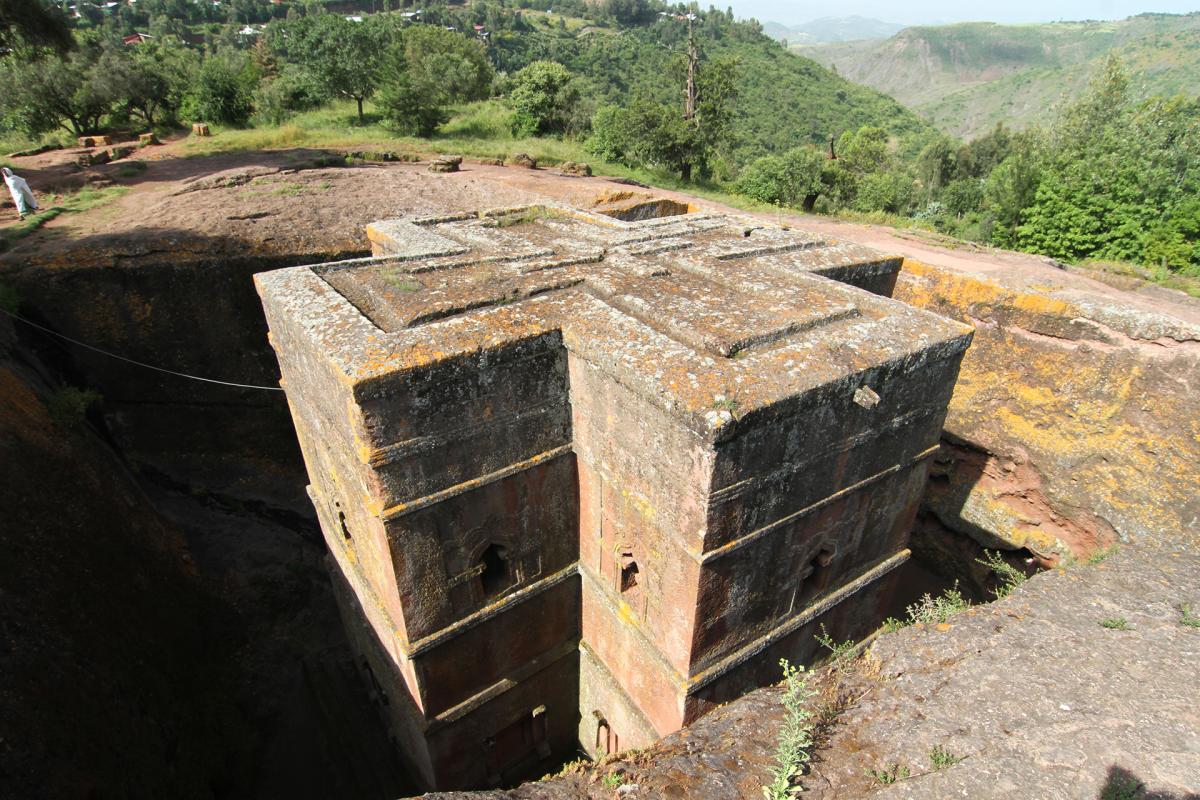
A curiosity: most of the faithful do not enter the church to pray, many remain outside and pray facing it; so it happens to see some women, dressed entirely in white, praying at the edge of the excavation where the church is located or a group of men sitting nearby.
All this helps to create a mystical atmosphere.
The sun illuminates the church and, although the ditch around is not very wide, the light reaches the base, illuminating the church.
We go down along the stairs carved into the rock and we reach the entrance of the Church of Saint George; it is interesting to enter and see the little light coming through the windows.
In the church there is a priest sitting on a chair, he is reading, he greets us with a nod and then returns to reading heedless of us.
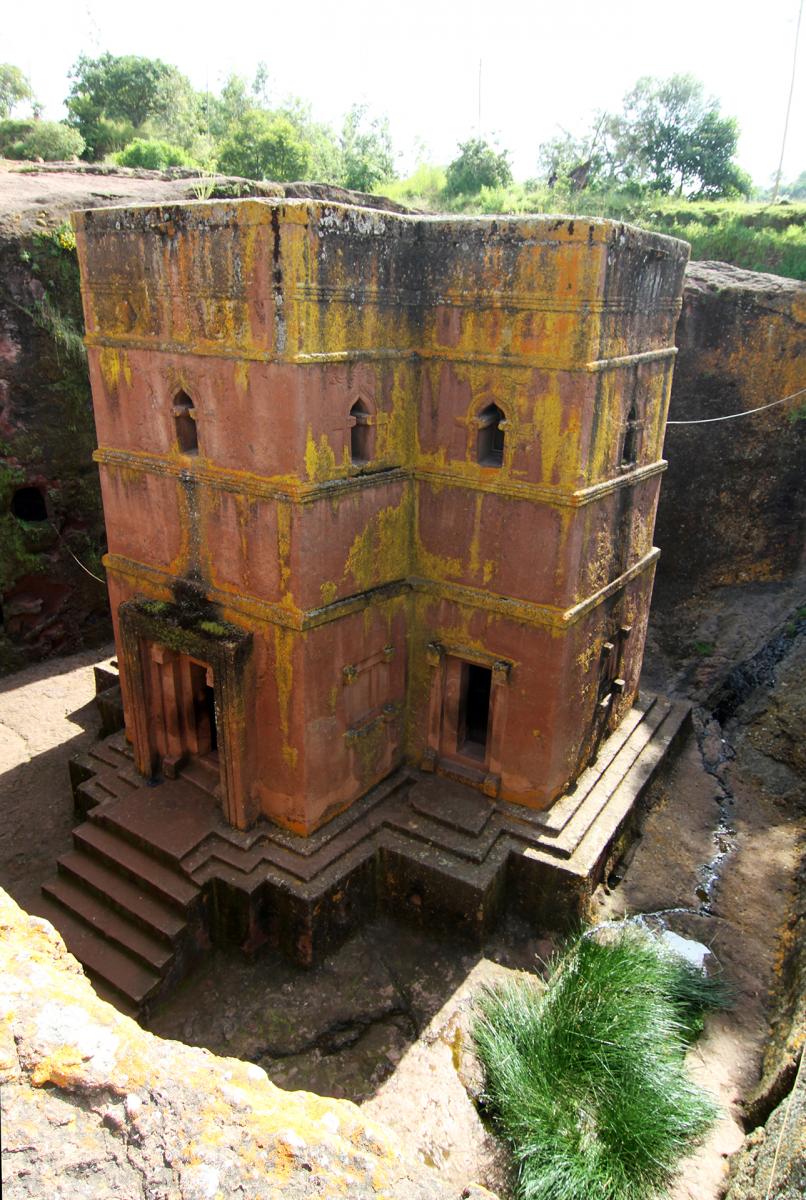
We get back to ground level, the view we have of the church from the top is unsurpassed, we have been kidnapped and we would be here all day enjoying it, but we have so many things to see today and we have to go.
We take a short walk uphill along the main road and arrive where there is a short stone staircase that, in turn, leads to a path that we must run to reach the Southeast Block of the Lalibela rock churches; but our attention was caught by a large group of people sitting on the lawn and at the edge of the path.
Today is Sunday and all these people gathered here to pray, obviously we can't understand what they say because they speak Amharic but the atmosphere is very engaging.
We ask if we can take photographs and they are happy to be immortalized, they also try to tell us something, but Amharic is certainly not an easily understandable language; some younger boys speak a few words of English and therefore we manage to have a minimum of dialogue.
We walk along the path and arrive where there is a stone bridge, this is the only way to overcome a narrow and deep natural moat that King Lalibela had renamed "River Jordan".
Once on the opposite side of the bridge, some very high steps carved into the stone lead us to a small arcade, from here we can admire the first church: Bet Gabriel-Rafael; from this vantage point we have a privileged view, with the sun filtering from above.
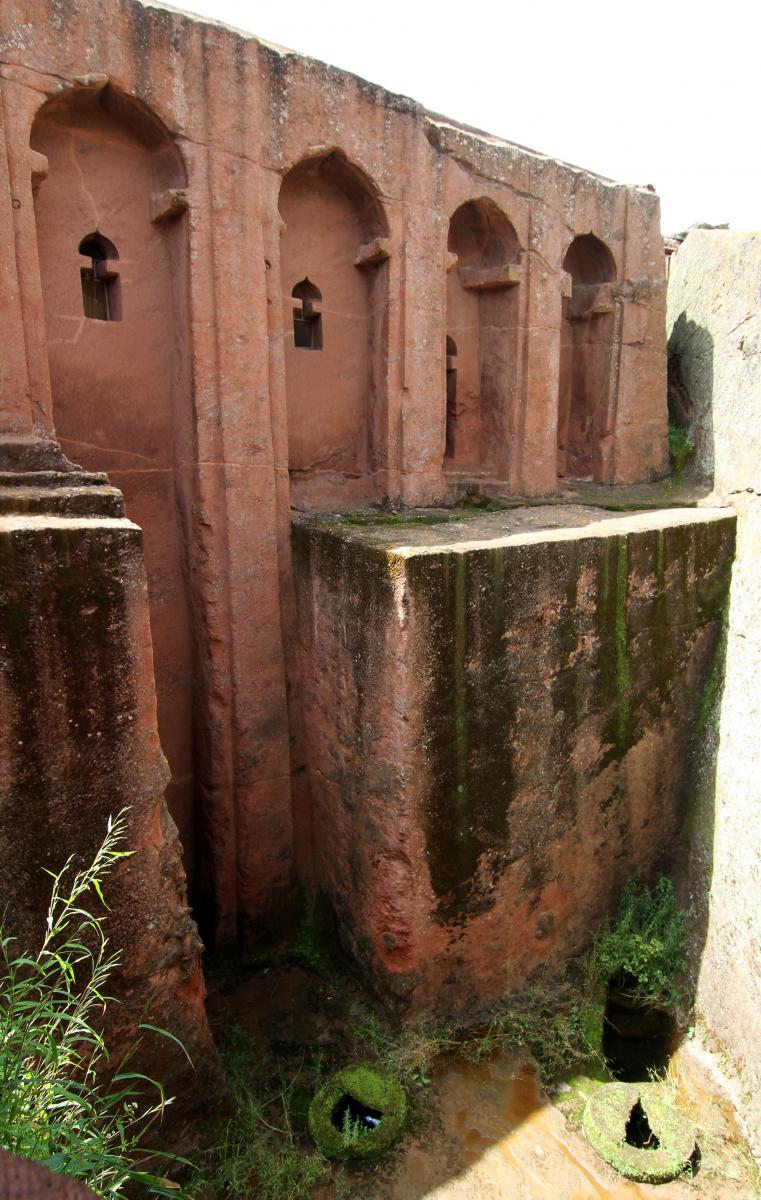
We stop briefly to enjoy this panorama and take some photographs, and then continue our journey along the stone bridge, that leads us into the church; this bridge is located at a considerable height with respect to the base of the church and I confess that, suffering from vertigo, I was not very happy to walk it.
We enter the church of Bet Gabriel-Rafael and we find ourselves in a dark room, arriving from outside for our eyes it is a bit hard to get used to the darkness, but then we can see a priest sitting in a corner, some paintings, that betrays its age, and the tissues, that hide the ark of the covenant found in all the Ethiopian Orthodox churches.
The entrance door to the church is of very simple wood but, observing it carefully, you can see, just mentioned, those that were once paintings.
To my great happiness we have to walk again the stone bridge over the abyss to return to the stone portico; from here we walk along a poorly lit tunnel, that then becomes a narrow moat dug into the rock that, due to humidity and poor solar irradiation, is completely covered in moss.
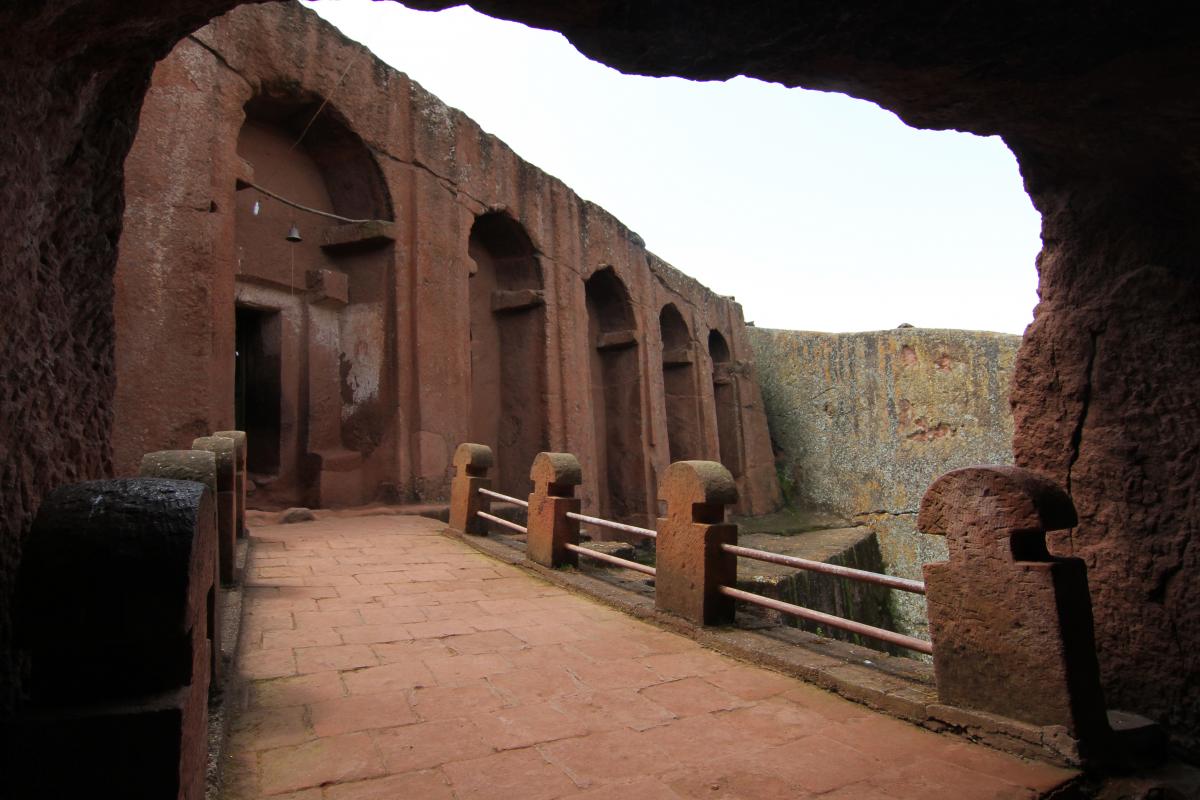
We reach Bet Mercurios or Bet Merkorios, this church is dedicated to a 3rd century Coptic saint who was tortured because of his faith.
Many think that this church originally, or in a specific historical period, was a prison because chains were found here.
Part of this church, unfortunately, collapsed and part was rebuilt in the 1980s; despite this there is a beautiful painting inside that depicts three wise men, many think that they represent the 3 Kings, but not all historians agree.
Many think that the dark tunnel that connects Bet Gabriel-Rafael and Bet Mercurios represents hell, others claim that it has to be walked without the use of light, but it is really dark and the risk of slipping is really high.
Bet Emanuel or Bet Amanuelis one of the most beautiful churches in Lalibela, it is monolithic and its external facades are sculpted.
Not far away is Biete Abba Libanos, a church that was built by digging a rock wall; it is the only church in Lalibela that has this particular structure, in fact it was also excavated on the sides.
The last church that belongs to the South-Eastern group is Bet Lehem, that we do not visit because it is the one that has been most damaged over the centuries.
Now that we have finished visiting the South-Eastern block of churches, it is time for lunch; instead of stopping in one of the restaurants in the city of Lalibela, that often offer little choice, we decide to return to the hotel, so we can also relax a bit after lunch before continuing our visit.
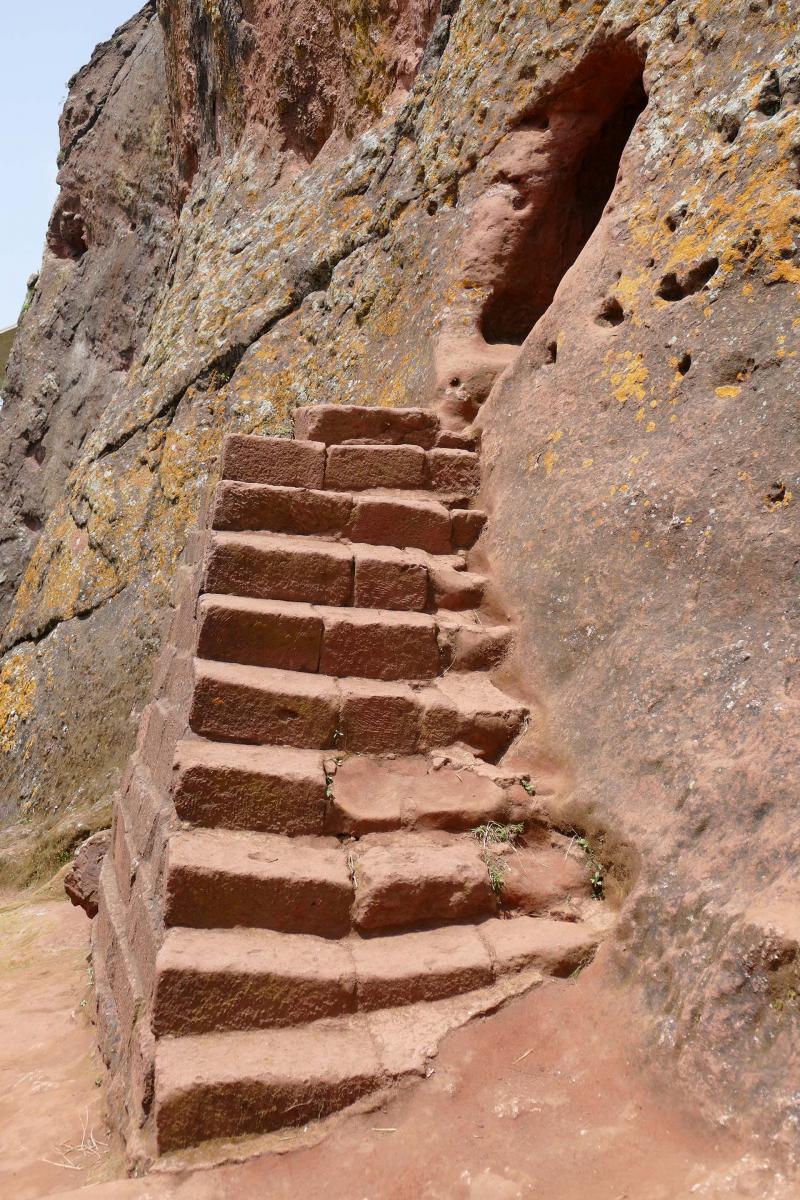
After having an Ethiopian lunch, a cuisine that we like very much, and after a bit of relaxation, around 3.00 pm we leave again to continue our exploration.
We still have to see the churches of the North-West Block, so we go by car to the entrance and then we go in.
Before going to the churches, we visit the small museum that is right next to the entrance; some relics and sacred objects are on display, including some beautiful Ethiopian crosses.
Ethiopian crosseshave always fascinated me, they are usually made with precious metals, such as gold or silver, they are very large and are placed on top of a long stick that is supported by the priest; the faithful approach the religious and he uses the cross to give the blessing, repeatedly touching the forehead and cheek of the faithful.
After visiting the museum we head to the churches.
The first one we see is Bet Medhane Alem; to reach the entrance of the church we have to go down a steep staircase carved into the rock, we must pay attention because it is a bit slippery.
When we reach the level of the ditch we first make a tour around the church to observe it from every angle; all around there are pillars that support the structure.
Bet Medhane Alem, like almost all the rock churches of Lalibela, has a roof, wanted by UNESCO, to protect it from the weather; excellent decision for the preservation of these masterpieces, too bad that, from the aesthetic point of view, the covers are very ugly and gigantic, with supporting poles that make it difficult to photograph the churches, they are really unsightly.
We enter the church, it is quite large compared to the others, we have to take off our shoes, luckily the floor is covered with carpets, otherwise it would be a bit complicated to walk on the excavated and irregular rock.
Today is Sunday, so the priest of every church supports the cross he uses to bless the faithful; the cross in this church is solid gold and is wonderful.
The priest wears a series of very beautiful vestments, we are a bit hesitant but then we ask if we can take some photographs and he answers us with a smile of assent, indeed he seems happy with the request.
Here, as in the churches we have already seen in the morning, there is a mystical and intimate atmosphere.
When we leave the church we take a tunnel that leads us to the adjacent courtyard, here we find three churches: Bet Maryam, Bet Meskel and Bet Danaghel.
Bet Maryam is the oldest and most venerated of all Lalibela, it is very beautiful to be photographed from the outside, but the interior is also remarkable: it is frescoed and decorated in bright colors.
This church is not very large, its peculiarity is that it is painted in some places, such as arches and walls: the paintings were made directly on the rock; inside there is little light and, in order to better admire the paintings, it is better to wait for the eyes to adapt to the darkness.
In the front courtyard there are some poolsthat are believed to have healing properties; one of these tanks is carved into the rock and is full of stagnant water, the water is covered with a patina of green slime that does not seem very healthy in reality, but it is very photogenic.
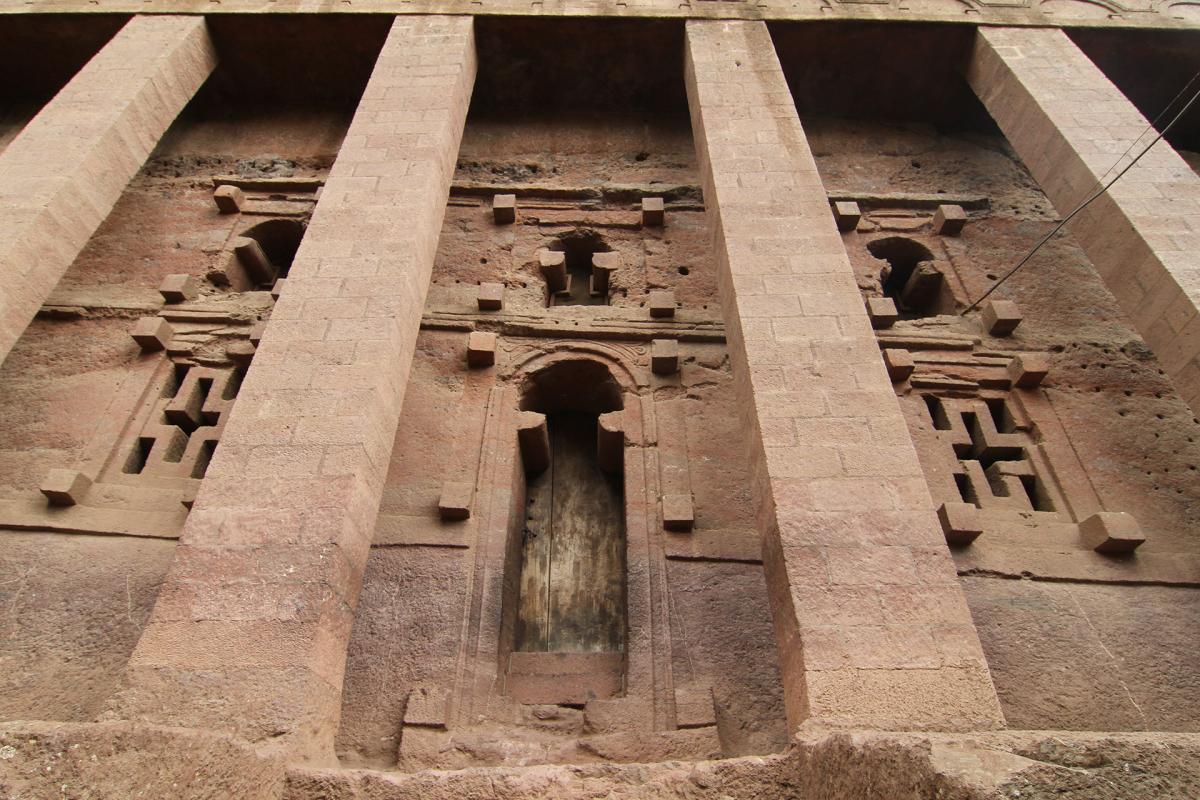
The walls of this church have a series of decorations engraved on them, we photograph some details and then we go up along a stone staircase and reach the ground level.
From here we can admire, not only Bet Maryam from another perspective, but we can also see the Chapel of Selassie, this is the tomb of King Lalibela.
We go back down the same stone staircase and continue our visit.
In the same courtyard are Bet Meskel and Bet Danaghel, both of these churches were carved into the rock face; they are interesting but less impactful than monolithic churches.
Bet Meskel is a small church, inside it is dark, on the ground there are several carpets while on the walls are hanging different fabrics; here too there is a priest with a gold cross; we take some pictures of him too, he's really very photogenic.
From an opening near Bet Danaghel, through paths carved into the rock, we reach two other rock churches: Bet Mika’el and Bet Golgotha; these churches are located at a lower level than Bet Maryam and are 10 meters deep, compared to the ground level.
The inside of Bet Mika'el has carved crosses, from here a passage leads to Bet Golgotha, but access to this church is forbidden to women; at this time, however, the church is closed to the public because they are restoring it.
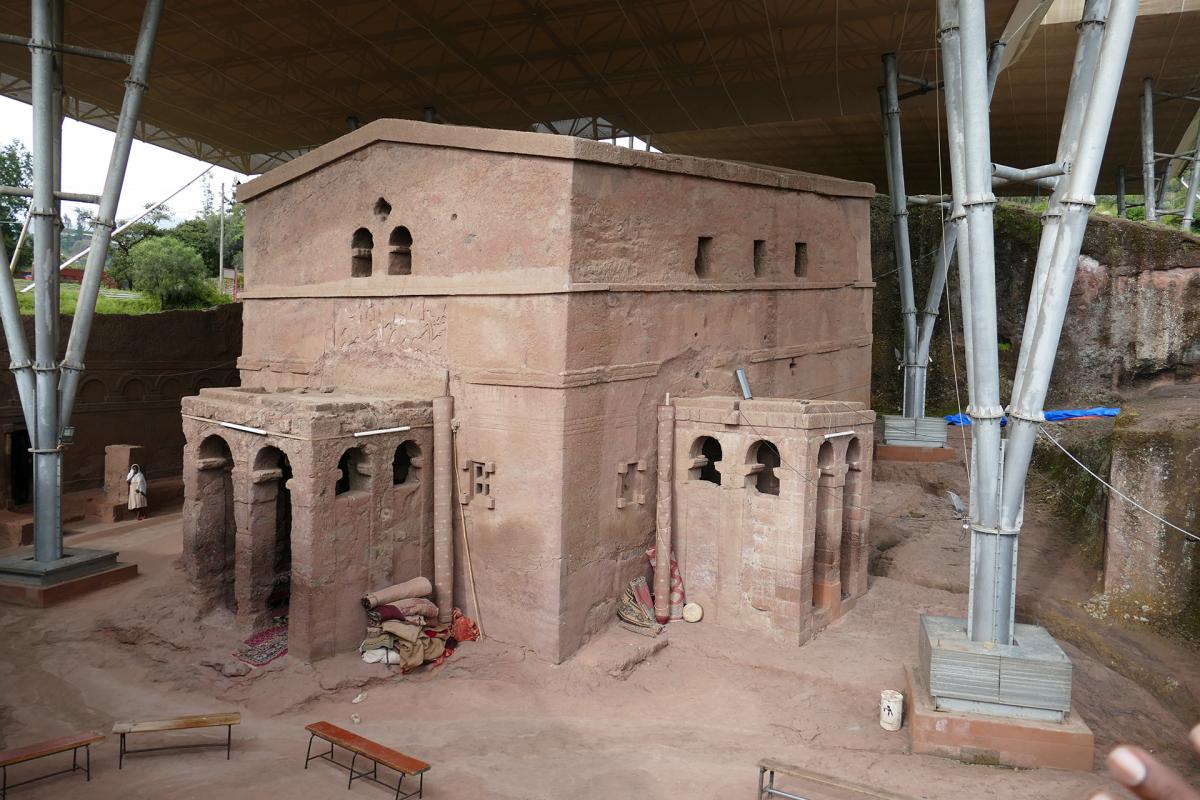
We ended our visit to the rock churches of Lalibela, we were impressed and fascinated by their beauty and uniqueness; we have not yet fully realized their splendor, I believe that, as often happens, we will be well aware of it later.
To return to the car we pass by a traditional village, it is very characteristic; here there are still some buildings built as they used to do in the past, they are very interesting.
We return to the hotel, Panoramic View Hotel, we are tired after all the walking we did today, but we are very happy: we take 2 Ethiopian beers and enjoy the sunset from our terrace and think back to the wonders we saw in these 2 days in Lalibela.
